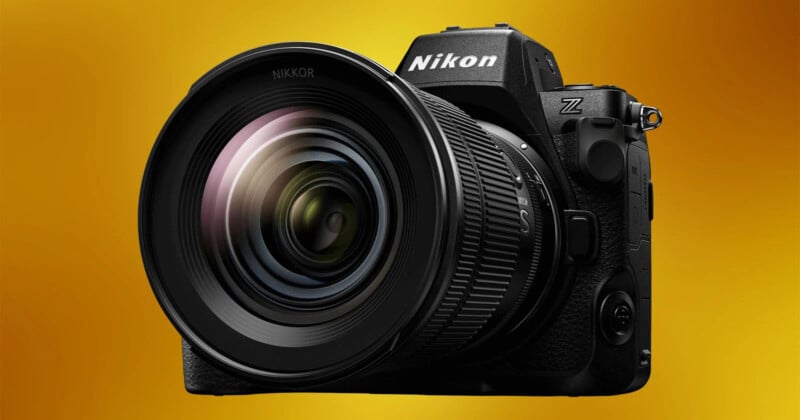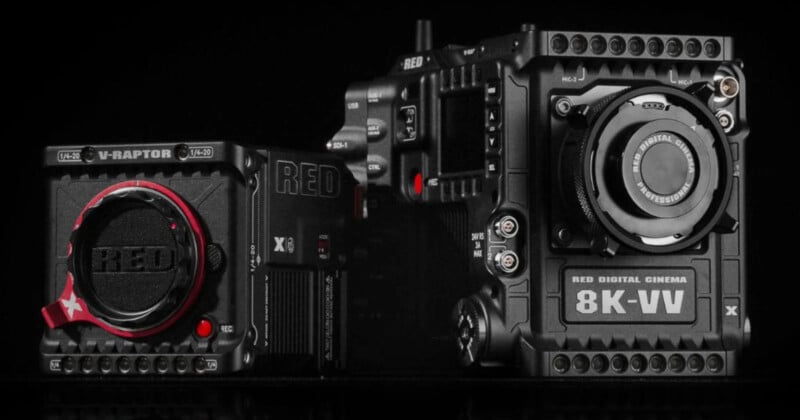
![]()
Nikon’s surprise acquisition of RED Digital Cinema this week represents a seismic shift in the cinema camera space. It also has far-reaching consequences not only for Nikon and RED but also for the rest of the digital camera industry, including Nikon’s biggest competitors.
Before proceeding into that discussion, however, it’s worth emphasizing that Nikon’s purchase of RED has yet to be finalized. While there are no immediate concerns about the viability of the purchase agreement, until all the I’s are dotted and the T’s crossed, there remains a chance the deal will fall through. It happens.
Nikon Redefines the Cinema Landscape
Assuming the purchase agreement reaches its desired conclusion and Nikon acquires RED, making the American cinema company a wholly-owned subsidiary of Nikon, how does it change the landscape?
Founded by Jim Jannard in California in 2005, RED Digital Cinema cameras have been used to film many major motion pictures and television series. Some of the more prominent recent productions that were shot using RED cameras include The Flash, The Matrix Resurrections, The Suicide Squad, Army of the Dead, Nobody, and The Irishman, to name just a handful. To see that RED has a strong foothold among the world’s largest production teams would be an understatement.
In one fell swoop, Nikon has transformed its digital imaging business. That’s not to say that Nikon needed a significant improvement, either. Quite the opposite as the company has not only been performing well financially, it has been making excellent cameras and lenses. The company has also made significant strides in the video space, with cameras like the Nikon Z8 and Z9 being very competent cameras for serious video work.
If there’s one knock against Nikon’s Z System regarding video performance, you could point to a lack of cinema-oriented lenses — at least from Nikon itself, as third-party manufacturers can help fill that void.

RED Makes Nikon a Dual Threat
Once the deal is completed, Nikon will have some of the world’s best and most powerful stills cameras — which are still very good video cameras — and among the most performant cinema cameras on the market. That is an enviable position.
It would have been a great week to be a fly on the wall inside Sony and Canon’s headquarters, as there is no question that some higher-ups at both companies have spent the last couple of days fuming about Nikon’s bold move.
When Nikon, a publicly traded company, releases its latest financials, it will be especially fascinating to see what this shiny new purchase cost. RED has approximately 220 employees and property, including a movie studio in Hollywood.
While there’s plenty of reason for Nikon to be interested in RED just on the basis of the company’s cameras, and perhaps finally putting what was a bitter lawsuit to bed, there must be more to it than that. RED is not publicly traded, so there’s no way to dig into complete financial performance, so we can leave that aside for now.
Profit, or potential lack thereof aside, something RED definitely offers Nikon is industry-defining cameras, proprietary RAW compression technology, image signal processing, and unique color science. These are all things that Nikon could implement into its own cameras.
Not to spend too much time on the lawsuit of it all, but I think it’ll be interesting if the arguments Nikon made about RED not having a strong claim to own its proprietary compression technology will hold less water now that Nikon will own the patent. I’m sure Nikon isn’t keen on a competitor testing its defenses.
RED is also respected for its image sensor technology. However, despite a bit of smoke and mirrors, RED can’t possibly manufacture its sensors. It can certainly design them and engineer specifications, but it is not a foundry company. RED also works with stacked image sensors in its high-end cinema cameras and has done so for a few years now. I’m sure Nikon could think of some interesting ways to put that technology to use in its stills cameras. RED’s image sensor expertise is undoubtedly of great value to Nikon.

Based on Nikon’s relatively short press release about its intention to buy RED, the company also touts different ways it could elevate RED’s digital cinema camera business, including through Nikon’s expertise in product development, engineering, image processing, optical technology, and user experience. Nikon also has a large and powerful network of business connections that could help improve RED’s product offerings from a logistic and marketing perspective.
Nikon has a rich history with developing autofocus technology, and has recently invested heavily in AI-powered autofocus features, so that’s something that RED customers may be hoping for on the horizon.
Optics, or lenses, is an especially interesting component to this deal. For starters, Nikon’s Z system lacks a robust range of cinema-friendly glass, or at least lenses designed for hardcore videography. Further, RED’s cameras famously include a wide range of lens mount options, including compatibility some of Nikon’s biggest rivals.
For example, the Komodo 6K and V-Raptor 8K cameras come with Canon RF-mount. Will Nikon continue to sell RED cameras with the Canon RF mount? Probably. Will Nikon begin to offer RED cameras with Nikon Z-mount? Well, maybe, but to what end exactly?
As for RED’s thoughts, the company’s press release is about as short as Nikon’s. However, RED does say:
This acquisition marks a significant milestone for Nikon, melding its rich heritage in professional and consumer imaging with RED’s innovative prowess. Together, Nikon and RED are poised to redefine the professional digital cinema camera market, promising an exciting future of product development that will continue to push the boundaries of what is possible in film and video production.
Nikon Becomes Major Player in Video Overnight
By purchasing RED, Nikon goes from a small, respectable player in the cinema world that has struggled to gain much traction, even as its products have improved significantly, to a significant player. Just like that, Nikon bought its way into a conversation the company has tried to participate in for years.
However, many questions remain concerning Nikon’s plans for RED’s brand, cameras, lenses, and technology.
If Nikon is looking for inspiration on approaching its newfound power and influence, it needs only to look at its rival, Sony, a force in professional photo and video spaces.
Alongside its E-Mount Alpha cameras, Sony has a thriving cinema camera operation. Cameras like the FX3, FX6, and FX9 have been used on major motion pictures and accept the same E-mount lenses as Sony’s interchangeable lens Alpha cameras. However, Sony also has its Venice line, which is a full-frame cinema camera that has the cine industry-standard PL lens mount.
The slight difference here is that Sony, despite its huge library of E-mount cameras and lenses, does also make PL lenses (CineAlta series). In contrast, Nikon doesn’t already have cine-specific lenses in its lineup. And as for RED, well, it made lenses for a bit more than a decade ago. It didn’t go very well.
Canon is also heavily involved in cinema cameras, although arguably not quite in the same way RED or Sony are. It relied heavily on cinematographers using its EF and RF lenses on RED cameras.
We may not need to wait too long to get an idea of Nikon’s potential direction for RED. NAB, one of the biggest video trade shows in the world, starts on April 13 in Las Vegas. RED is a frequent participant; its absence this year would be surprising. Nikon is also there annually and it would be very strange to not see both touting their new partnership.
![]()
The Potential for Nikon (and RED) is Significant
Regardless of the precise ways Nikon uses its RED purchase and the products that come down the pipeline in the next few years, it is immediately clear that Nikon is now a significant force in the digital cinema camera market. Nikon has gone from second (or, rather, fifth) fiddle to playing a leading role.
Beyond being a perfect example of “When you can’t beat ’em, buy ’em,” Nikon’s purchase is also a masterstroke. The potential here for Nikon is vast, and if the company handles this situation as well as it has its recovery in the mirrorless camera space, the potential will ultimately be realized.
Image credits: Featured image courtesy of RED






